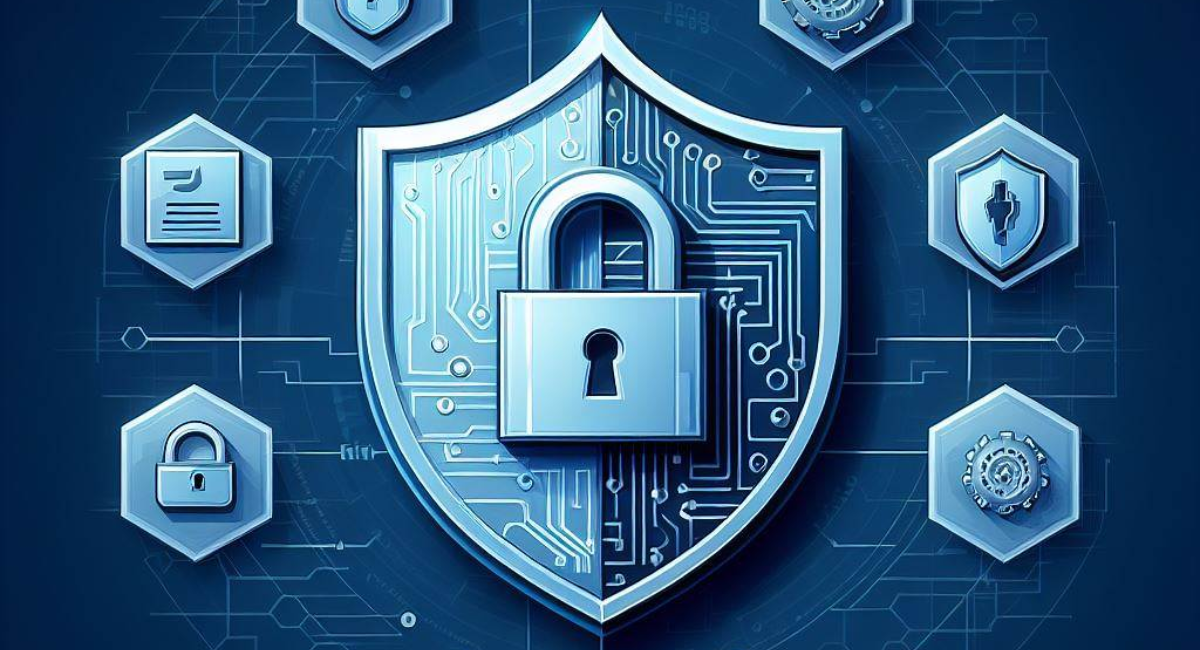Modern encryption systems convert plain, readable data into a scrambled and unreadable format using complex algorithms and keys, ensuring sensitive information remains secure from unauthorized access and breaches across various platforms and industries.
In today’s digital age, where data is constantly being exchanged and stored across various platforms, it is paramount to ensure the security and integrity of sensitive information. This is where modern encryption systems come into play, offering a robust defense against unauthorized access and data breaches. In this article, we will delve into the intricacies of modern encryption systems, their role in data protection, the different types available, the encryption process, and their application across various industries, such as healthcare and finance.
Understanding Modern Encryption Systems
Encryption is converting plain, readable data into incomprehensible ciphertext, rendering it unreadable to unauthorized entities. It involves complex algorithms and keys, making it extremely difficult for hackers to decipher the encrypted data. To gain a deeper insight into modern encryption systems, let’s explore the basics and key components involved.
The Basics of Encryption
At its core, encryption relies on using cryptographic algorithms, which mathematically manipulate data to make it unreadable. These algorithms convert plaintext into ciphertext by scrambling the original information using a secret key. Without the corresponding key, decrypting the ciphertext is virtually impossible, ensuring the confidentiality of the data.
Encryption has been used for centuries to protect sensitive information. In ancient times, people would use simple substitution ciphers to encode their messages. These ciphers replaced each letter in the plaintext with another letter from the alphabet. While these methods were effective at the time, they are no match for the sophisticated encryption systems used today.
Contemporary encryption methods prioritize robust security, making them tough to breach. They utilize intricate math-based processes, including modular calculations and operations at the bit level, to convert clear text to encrypted form. Many encryption techniques also undergo several encryption phases, amplifying the safety of the encoded information.
Key Components of Modern Encryption Systems
Modern encryption systems contain three key components: the plaintext, the cryptographic algorithm, and the secret key. The plaintext is the original data that must be protected, while the cryptographic algorithm defines the mathematical operations that transform the plaintext into ciphertext. Lastly, the secret key is the unique code that allows authorized parties to decrypt the ciphertext back into plaintext.
When it comes to encryption, the choice of cryptographic algorithm is crucial. There are various encryption algorithms, each with strengths and weaknesses. Some popular encryption algorithms include Advanced Encryption Standard (AES), RSA, and Elliptic Curve Cryptography (ECC). These algorithms have undergone extensive testing and analysis to ensure their security and reliability.
The secret key is a fundamental component of encryption. It is information known only to the authorized parties involved in the encryption and decryption. The length and difficulty of the secret key play a significant role in the security of the encrypted data. Longer and more complex keys are generally considered more secure, as they increase the number of possible combinations, making it harder for attackers to guess or brute-force the key.
Besides the primary elements highlighted earlier, contemporary encryption methods frequently integrate extra security measures. These might encompass verification tools like digital endorsements to confirm the encrypted data’s genuineness and reliability. Such systems might also employ secure methods for producing, dispersing, and preserving confidential keys.
Overall, modern encryption systems are critical to ensuring the security and privacy of sensitive information. By understanding the basics of encryption and the key components involved, individuals and organizations can make informed decisions about the encryption methods they use to protect their data.
The Role of Encryption in Data Protection

Data protection encompasses two fundamental aspects: confidentiality and integrity. Encryption plays a vital role in preserving both elements, safeguarding sensitive information from unauthorized access and tampering.
When it comes to data confidentiality, encryption serves as a powerful tool. Encrypting the information becomes virtually indecipherable to any unauthorized individuals or malicious actors attempting to intercept it. Even if the encrypted data is compromised, it remains useless without the corresponding decryption key. Encryption involves transforming the original data into a format that is only readable with the correct key, making it an essential component in protecting sensitive information.
However, encryption not only focuses on confidentiality; it also plays a vital role in maintaining data integrity. By applying encryption to data, any alteration or tampering attempts will render the encrypted information unreadable and invalid. This ensures that the original integrity of the data remains intact, providing a reliable means to verify its authenticity. In other words, encryption acts as a safeguard against unauthorized modifications, ensuring that the data remains trustworthy and unaltered.
Furthermore, encryption algorithms are designed to be highly secure and attack-resistant. They employ complex mathematical functions and cryptographic techniques to ensure that the encrypted data remains protected. This level of security is crucial in today’s digital landscape, where cyber threats are continually evolving and becoming more sophisticated. Encryption provides an additional defense against potential breaches and unauthorized access, making it an essential component of any comprehensive data protection strategy.
Moreover, encryption is not limited to specific types of data or industries. It can be applied to various forms of information, including personal data, financial records, intellectual property, and even communication channels. This versatility makes encryption valuable for individuals, businesses, and organizations across different sectors, ensuring that their sensitive data remains secure and confidential.
As technology advances, encryption techniques evolve to keep up with emerging threats. Encryption algorithms are regularly updated and improved to address vulnerabilities and enhance overall security. This ongoing development ensures that encryption remains an effective and reliable method for protecting data in an ever-changing digital landscape.
In conclusion, encryption plays a crucial role in data protection by ensuring confidentiality and integrity. It provides a means to safeguard sensitive information from unauthorized access and tampering. Encryption not only renders data indecipherable to unauthorized individuals but also acts as a defense against unauthorized modifications, ensuring the integrity and authenticity of the data. With its versatility and constant evolution, encryption remains essential to any robust data protection strategy.
Different Types of Modern Encryption Systems
Modern encryption systems can be broadly categorized into two types: symmetric encryption systems and asymmetric encryption systems. Let’s take a closer look at these approaches and their respective functionalities.
Symmetric Encryption Systems
Symmetric encryption, also known as secret-key encryption, involves using a single key shared between the sender and the recipient. This key is used for encryption and decryption, making it a fast and efficient method. However, the challenge lies in securely distributing and managing the secret key to ensure its confidentiality.
Asymmetric Encryption Systems
Unlike symmetric encryption, asymmetric encryption, also called public-key encryption, employs a pair of distinct keys: public and private. The public key is available to everyone, allowing anyone to encrypt data intended for the recipient. However, the private key remains with the recipient exclusively, ensuring that only they can decrypt the encrypted data. This approach eliminates the need for secure key distribution but has a higher computational overhead.
The Process of Data Encryption
Now that we understand the different types of encryption systems let’s dive into the actual process of data encryption. We will explore two widely used encryption standards: the Data Encryption Standard (DES) and the Advanced Encryption Standard (AES).
Data Encryption Standard (DES)
DES is a symmetric encryption standard widely adopted in the 1970s and 1980s. It uses a 56-bit key length and a complex substitution-permutation network to encrypt and decrypt data. Although DES provided a robust level of security at the time, it has gradually been replaced by more advanced encryption algorithms due to its vulnerability to brute-force attacks.
Advanced Encryption Standard (AES)
AES, on the other hand, is a symmetric encryption standard that supersedes DES. It offers a higher level of security, with key lengths of 128, 192, or 256 bits. AES employs a substitution-permutation network, similar to DES, but with a more complex structure. This makes it significantly more resistant to brute-force attacks, thereby ensuring the confidentiality and integrity of sensitive information.
The Use of Encryption in Various Industries
Encryption finds application in various industries where data protection and confidentiality are paramount. Let’s explore two key sectors that heavily rely on encryption: healthcare and finance.
Encryption in Healthcare
In the healthcare industry, patient confidentiality is paramount to protecting sensitive medical records and personal information. Encryption is vital in ensuring patient data remains secure during storage and transmission. By encrypting electronic health records (EHRs), healthcare providers can safeguard patient privacy and comply with regulatory necessities, such as the Health Insurance Portability and Accountability Act (HIPAA).
Encryption in Finance

Encryption is a critical security measure in the finance sector, where financial transactions and sensitive client information are exchanged regularly. It protects confidential data, such as credit card details and banking credentials, during online transactions and secure communications. Encryption ensures that financial institutions and their clients can conduct transactions securely, mitigating the risk of fraud and unauthorized access.
Key Takeaways
- Modern encryption transforms readable data (plaintext) into unreadable data (ciphertext) using algorithms and keys.
- There are two primary encryption types: symmetric (using one shared key) and asymmetric (using a pair of public and private keys).
- Modern encryption ensures confidentiality (making data unreadable to unauthorized parties) and integrity (ensuring data remains unaltered and trustworthy).
- Encryption is vital in industries like healthcare (for patient data protection) and finance (securing transactions and sensitive client information).
- Advanced encryption techniques, like AES, are favored in modern systems for their enhanced security and resistance to attacks.
FAQs
What is the primary purpose of modern encryption systems?
The primary purpose is to protect sensitive data by converting it into an unreadable format, ensuring it remains secure from unauthorized access and breaches.
What are the two main categories of modern encryption systems?
They are symmetric encryption (secret-key encryption) and asymmetric encryption (public-key encryption).
How does asymmetric encryption differ from symmetric encryption?
Asymmetric encryption involves a dual-key system (public and private) for encoding and decoding, whereas symmetric encryption employs a common key for both tasks.
What industries heavily rely on encryption for data protection?
Healthcare and finance are two primary industries that heavily rely on encryption to protect sensitive information and comply with regulations.
Why is the Advanced Encryption Standard (AES) preferred over the Data Encryption Standard (DES)?
AES offers higher security levels with longer key lengths and is more resistant to brute-force attacks than DES.
Conclusion
In conclusion, modern encryption systems protect data and ensure its secure use. By leveraging robust encryption algorithms, carefully managing keys, and implementing encryption across various industries, we can protect sensitive info from unauthorized access and maintain the confidentiality and integrity of data in today’s digital landscape.
